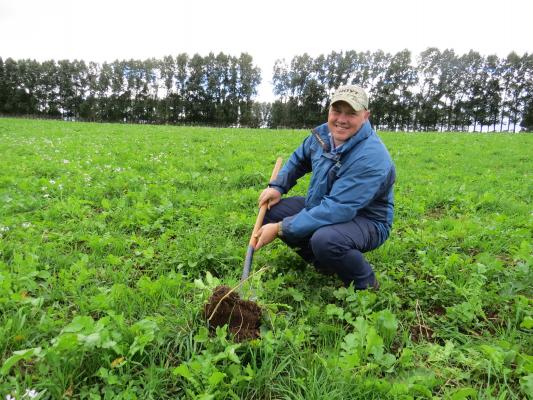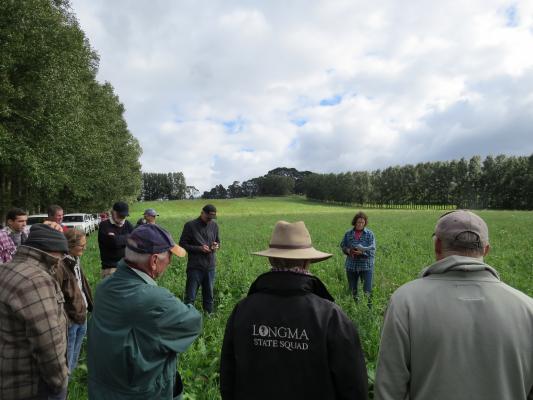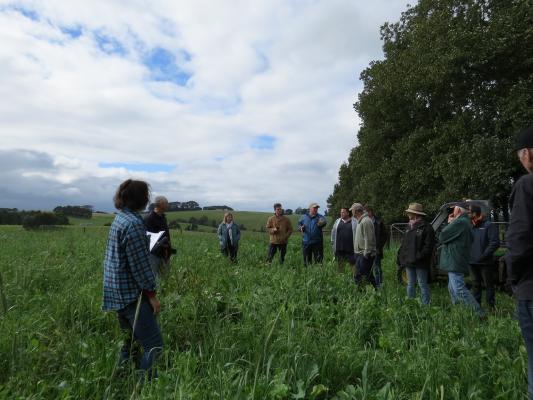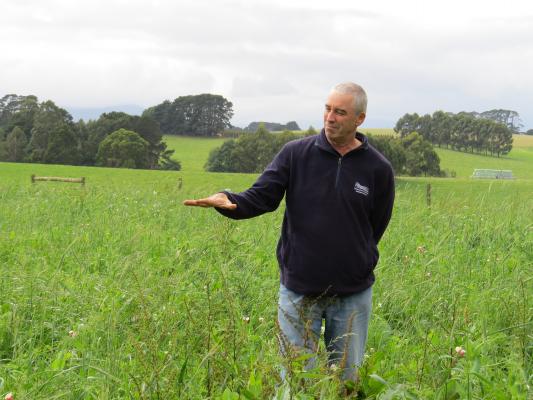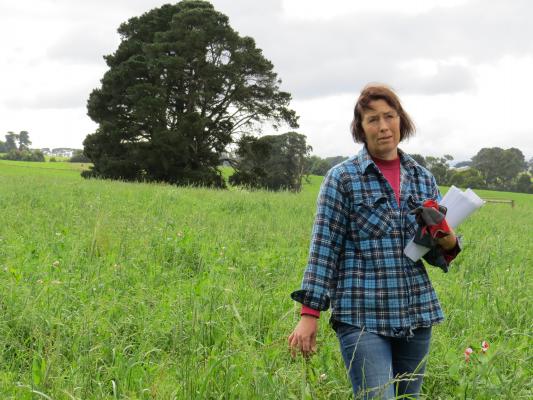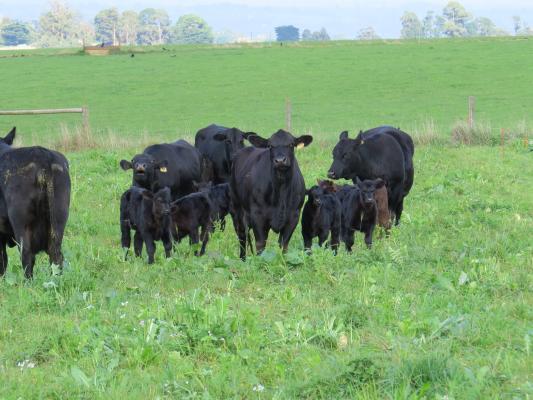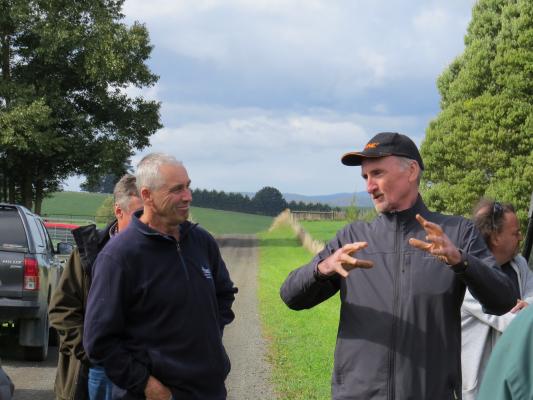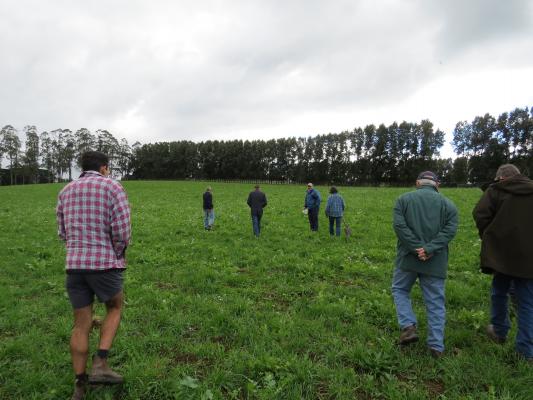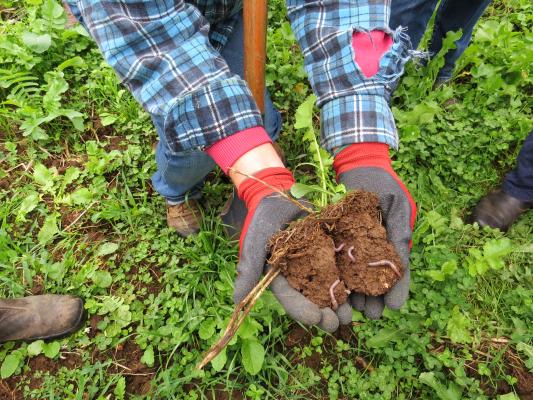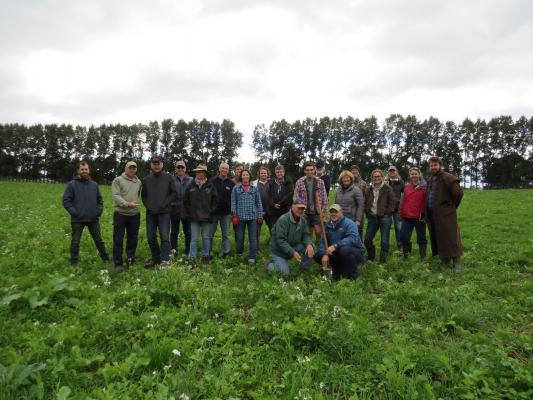Solid foundations lay the groundwork in building a sturdy home, and when it comes to farming, the same principle can be applied. A range of new workshops on regenerative agriculture are proving that when it comes to creating a sustainable farm business, the answers may be just beneath our feet. GABRIELLA PAYNE reports.
It’s a brisk morning up in the rolling green hills of Neerim Junction as a group of local farmers, about 30 or so, gather together on Friday 23 April.
They’re here to learn about and see first-hand the results of practicing regenerative agriculture, something the farm’s owners Cathy and Andrew have been trialling the last few years – and the results speak for themselves.
As the group of farmers walk through the lush fields, touring the property and learning from expert scientists, landcare leaders and the farmers themselves, Marno Muller, the farm manager here at Cathy and Andrew’s property, digs a spade full of soil out of the earth.
Just a few centimetres below the surface it is clear to see the impacts that regenerative agriculture has had on this land – the shovel now brimming with nutrient rich soil and teeming with plump, healthy worms.
Cathy tells the group that since they started practicing regenerative agriculture techniques here, she has seen a huge improvement in the land.
“You get so much improvement in soil, and the cattle are happier and healthier too,” she says.
“I’d like to see our whole property look like this.”
Regenerative agriculture is no new principle, but according to Mark Gardner, a regenerative agriculture advisor from Vanguard Business Services based in rural NSW, there’s a growing demand to learn within the Australian farming community.
“Regenerative agriculture has been around in our state [NSW] for about 25-30 years, but I think it’s starting to spread and there’s a huge amount of interest in Victoria, around all aspects of regenerative agriculture,” he said.
“People are very interested in more natural ways of farming – it’s about understanding what options are out there.”
This interest has sparked the creation of a new set of workshops, run by Mark Gardner in collaboration with the Western Port Catchment, Bass Coast and South Gippsland Landcare networks.
Mr Gardner said that together, he and the landcare networks had “spent quite a bit of time” working out the most interesting and relevant topics for people in the Port Phillip and Western Gippsland areas to tackle in this short series of workshops, which are running now and finish up on Thursday 6 May.
The three workshop series, each of two hours, is being run online via Zoom and aims to teach the participants how to “develop a profitable and family-friendly regenerative farm business”, just like Cathy and Andrew are doing up in Neerim Junction.
“I think a lot of families are sort of on a treadmill and it’s difficult to get off – and I think regenerative agriculture offers an opportunity of having a business that’s different to the traditional high input agriculture business,” Mr Gardner said.
For those unfamiliar with the concept, Mr Gardner explained that regenerative agriculture is “less of a reliance on artificial inputs” and “more reliance on some of the natural inputs into agriculture”.
“The basic premise of regenerative agriculture is working with nature and looking at a lot more nature friendly, soil friendly and plant friendly ways of managing our agriculture,” he said.
Mr Gardner said he was particularly looking forward to running the final session of the workshop series, as it focused on “looking ahead” and tackled topics such as carbon footprinting.
“What we want to do is spend some time looking over the horizon at the next two or three years and look at the market based opportunities that open up for regenerative production and low carbon footprint produce, so that’s going to be a really good one,” he said.
“We’ve got some great case studies about how farmers have created new income sources or achieved higher income based on their regenerative production, whether that’s wool, meat or any other produce.”
Peter Ronalds, the Sustainable Agriculture Manager for the Western Port Catchment Landcare Network, said that the workshops were an exciting opportunity to help educate local farmers about the benefits of regenerative agriculture.
“For most farmers, the sustainability of the enterprise is of paramount importance,” Mr Ronalds said.
“The sustainability covers the natural resources, water and soil that the farmer depends on to make a living.
If nutrients are being drawn down for example and not being replaced, then the whole enterprise is under threat.
If the water on the land is being polluted and the cattle are drinking out of it, then they won’t be getting the most out of the land either – so we will be covering a range of things,” he said.
Mr Ronalds said that whilst the series of workshops wasn’t as extensive as the seven week regenerative agriculture course that landcare ran last year, it would still cover most topics and act as an introduction for many farmers to a more sustainable future.
Back on the farm tour in Neerim Junction, the avid group of farmers had just completed the more extensive regenerative agriculture training, and were taking a look at the environmental impacts first-hand as part of their course.
Cathy addressed the group again, answering their many questions about her and her husband’s own regenerative agriculture experiences thus far, stating they had no intention of stopping anytime soon.
“I see us doing this all the time, we’ve seen so much improvement,” she said.
“Making the soil as healthy as possible is just the way of the future.”
For more information about regenerative agriculture and the series of workshops being run by landcare, visit http://www.wpcln.org.au/

